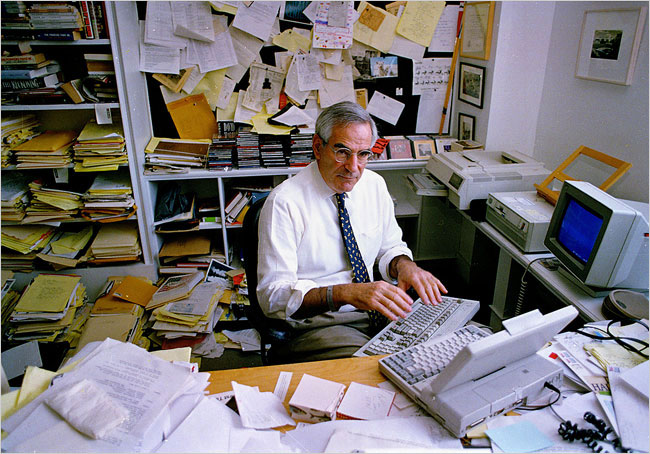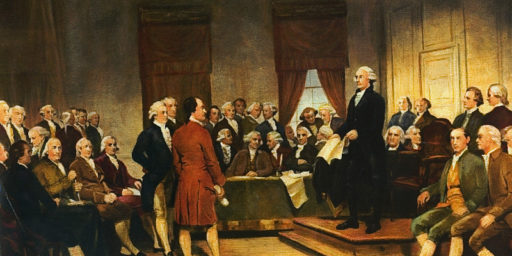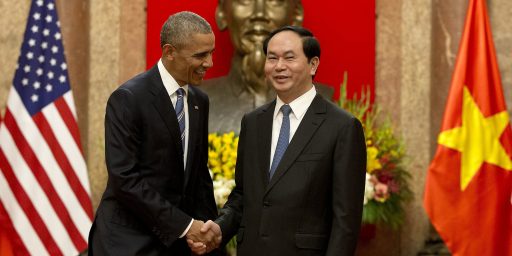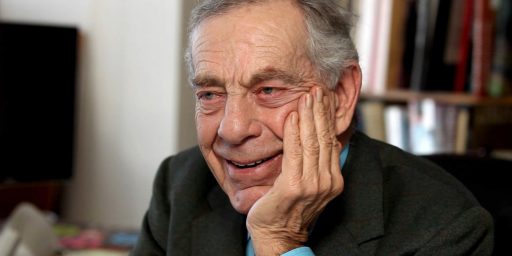David Halberstam Killed in Car Crash
The legendary author and journalist David Halberstam was killed in an automobile accident yesterday.
David Halberstam, a Pulitzer Prize-winning journalist and tireless author of books on topics as varied as America’s military failings in Vietnam, the deaths of firefighters at the World Trade Center and the high-pressure world of professional basketball, was killed yesterday in a car crash south of San Francisco. He was 73, and lived in Manhattan.
Mr. Halberstam was a passenger in a car making a turn in Menlo Park, Calif., when it was hit broadside by another car and knocked into a third vehicle, said the San Mateo County coroner. He was pronounced dead at the scene. The man who was driving Mr. Halberstam, a journalism student at the University of California at Berkeley, was injured, as were the drivers of the other two vehicles. None of those injuries were called serious.
Mr. Halberstam was killed doing what he had done his entire adult life: reporting. He was on his way to interview Y. A. Tittle, the former New York Giants quarterback, for a book about the 1958 championship game between the Giants and the Baltimore Colts, considered by many to be the greatest football game ever played.
Tall, square-jawed and graced with an imposing voice so deep that it seemed to begin at his ankles, Mr. Halberstam came into his own as a journalist in the early 1960s covering the nascent American war in South Vietnam for The New York Times. His reporting, along with that of several colleagues, left little doubt that a corrupt South Vietnamese government supported by the United States was no match for Communist guerrillas and their North Vietnamese allies. His dispatches infuriated American military commanders and policy makers in Washington, but they accurately reflected the realities on the ground. For that work, Mr. Halberstam shared a Pulitzer Prize in 1964. Eight years later, after leaving The Times, he chronicled what went wrong in Vietnam — how able and dedicated men propelled the United States into a war later deemed unwinnable — in a book whose title entered the language: “The Best and the Brightest.”
Mr. Halberstam went on to write more than 20 books, including one on the Korean War scheduled to be published in the fall.
“I think the work he was proudest of was his trilogy on war,” his wife, Jean Halberstam, said last night. Besides “The Best and the Brightest,” she was referring to a study of United States policies in the 1990s called “War in a Time of Peace: Bush, Clinton and the Generals,” and the Korean War book, “The Coldest Winter.”
Mr. Halberstam’s range, however, extended well beyond war. His interests roamed from basketball to the auto industry, from the 1949 American League pennant race to the rise of modern media conglomerates in the 20th century. “A writer should be like a playwright — putting people on stage, putting ideas on stage, making the reader become the audience,” he recently told an interviewer for NY1 News.
Over the years, he developed a pattern of alternating a book with a weighty theme with one that might seem of slighter import but to which he nonetheless applied his considerable reportorial muscles. “He was a man who didn’t have a lazy bone in his body,” said the writer Gay Talese, a close family friend. Almost invariably, Mr. Halberstam wrote about sports in those alternate books. “They were his entertainments,” his wife said. “They were his way to take a break.” As a result, his book on the media, “The Powers That Be,” was followed by a basketball book, “The Breaks of the Game.” A study of the decline of the American automobile industry and the Japanese ascension, “The Reckoning,” was followed before long by “The Summer of ’49,” on an epic pennant battle between the New York Yankees and Boston Red Sox.
Other works included “The Fifties,” a look at a decade that he argued was more monumental than many believed; “The Children,” about the civil-rights movement of the 1960s; and “Firehouse,” a study of the tight-knit world of New York firefighters, focused on 13 men from a firehouse near his Upper West Side home who went to the World Trade Center on 9/11. Only one survived.
A remarkable body of work.
Photo Credit: Mark Lennihan/Associated Press via the NYT.







The NYT obit says he left the paper “not necessarily on the best of terms,” but the WaPo doesn’t have any light to cast. Curious.